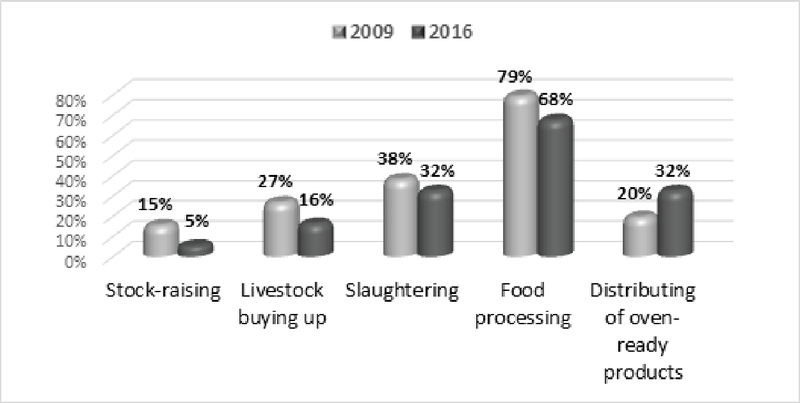Development Of Ict Support Of Hungarian Meat Sector
DOI:
https://doi.org/10.18502/kss.v1i2.650Abstract
Food safety and quality are keys to companies' business survival and great efforts and resources are devoted to them. Through the quick development of computer technology, a number of new and innovative methods have been elaborated to solve this problem.A full traceability of products can be realized by the adaptation of numbering and bar code systems, as well as by electronic and biological marking systems, on the basis of their appropriate combination. Identification technologiesmake the traceability of a product in aproduct chain possible and their use is relevant during almost every phase of the product line, as it is necessary to provide for the unambiguous identification of each individual product.In order to compare the identification technologies, we have to consider several factors. While there are numerous advantages and disadvantages for each solution in comparison with the other techniques, we still cannot unanimously choose the one that conforms to the requirements of the meat industry product chain the best, as there are different challenges on each step of the product chain. We performed the comparison of the identification technologies on the basis of different characteristics. Our objective was to explore, systemize and analyze those identification technologies applicable for meat industrial product chains. The regulations of identification provide for the continuity and reliabilityof tracing among independent partners. Our research focused on food tracing systems, utilized identification systems and those which may become applicable in the future. We also studied information technology tools and examined the establishment of Hungarian meat industry enterprises. Based on our survey, we established that the bar code technique is currently the absolute leader in the sector,although modern solutions provide numerous advantages, their profitable application is not possible for the time being.
Keywords: Food safety, traceability, identification
References
P. Balogh, A. Bai, J. Popp, L. Huzsvai, and P. Jobbágy, Internet-orientated Hungarian car drivers’ knowledge and attitudes towards biofuels, Renewable and Sustainable Energy Reviews, 48, 17–26, (2015).
P. Balogh, D. Békési, M. Gorton, J. Popp, and P. Lengyel, Consumer willingness to pay for traditional food products, Food Policy, 61, 176–184, (2016).
Z. Cebeci, et al., Designing a Conceptual Production Focused and Learning Oriented Food Traceability System, 18–20, (2008).
C. Dupuy, V. Botta-Genoulaz, and A. Guinet, Batch dispersion model to optimise traceability in food industry, Journal of Food Engineering, 70, no. 3, 333–339, (2005).
V. Fraza, Ending inventory errors in 60 days, In Modern Materials Handling, 55, no. 3, p. A11, (2000).
T. Gál, L. Nagy, L. Dávid, L. Vasa, and P. Balogh, Technology planning system as a decision support tool for dairy farms in Hungary, Acta Polytechnica Hungarica, 10, no. 8, 231–244, (2013).
C. K. Lau, http://www.microsurgeon.org, Annals of Plastic Surgery, 62, no. 6, 600– 601, (2009).
I. Smith and A. Furness, Improving traceability in food processing and distribution, Improving Traceability in Food Processing and Distribution, 1–258, (2006).
Traceability in Food and Agricultural Products.Bulettin No 91/, p. 2015
H. M. Kim, M. S. Fox, and M. Gruninger, Ontology of quality for enterprise modelling, 105–116.
A. Soltész, et al., Analysis of economic risks in sow production, In Journal of Agricultural Informatics, 4, no. 2, 10–21, (2013).
Z. Szakály, et al., The Influence of Personal Values on the Transition towards Healthconscious Diet: a Segmentation Approach, In Journal of Food and Nutrition Research, 2, no. 8, 476–484, (2014).
Y. Pico, Chemical Analysis of Food: Techniques and Applications, Academic Press, San Diego, USA, 2012.
Z. Cebeci, et al., An ICT-based traceability system in compound feed industry, In Applied Studies in Agribusiness and Commerce APSTRACT, 59–64, (2009).

